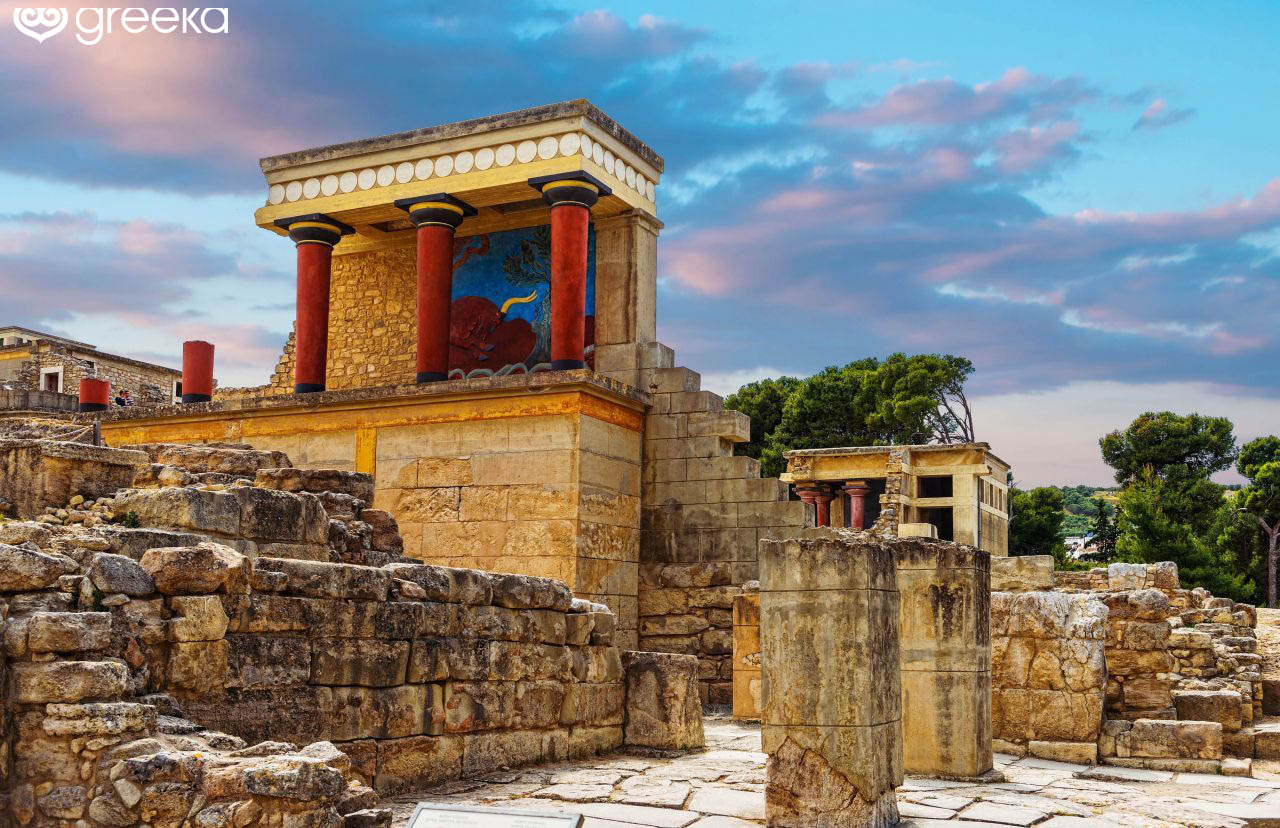Ancient Crete

The history of Ancient and Minoan Crete, Greece: The history of Crete is long and rich and, according to archaeologists, it started in the Neolithic times. Crete had always played an important part in the history of Greece and it is worth to mention that the island had made its appearance vivid in many aspects of the Mediterranean and the Greek culture, even in the Greek mythology.
A lot of myths report that Zeus, the chief of the gods, was brought up in Ideon Andron and the Cretan soldiers, known as Kourites, protected him. It was from Crete that Daedalus and Icarus, kept in prison by King Minos, escaped with waxen wings and became the first people to fly.
However, the most famous myth is the one that connects Crete to Labyrinth and the Minotaur, which was eventually killed by the legendary hero Theseus. The Labyrinth was probably found close to the Palace of Knossos, while others believe that it was found on the northern side of the island.
The most prosperous period in the history of ancient Crete was certainly the Minoan period, named after the mythical king Minos. This period reached its peak from the 16th to the 14th century B.C. and many excavations have revealed important information about this ancient civilization. For example, stones with a strange form of writing, known as Linear A, have been found, which makes Crete the first Greek region to invent writing. These writing symbols have not been de-coded yet by modern scientists.
Taking into account that Minoan Crete had developed writing, we deduct that it also had developed other parts of civilization. As seen by ancient frescoes, Minoan towns were rich and had gained this richness mainly from trading their agricultural products all over the Mediterranean Sea. They had thus developed an important navigation system, had built ships and had made beautiful pots to restore their trading goods, usually olive oil, cereals, and wine.
Along with trade, the Minoans also invented coins and money. Sometimes, they would also exchange their products with expensive clothes and jewellery from the Middle East, bringing nice gifts back home. They also developed a great urban planning system with cisterns, paths, walls, and a sewage system. Their kings would live a luxurious life in nice palaces and would frequently organize festivals. All citizens participated in these festivals, which also included shows with bulls. That is why the bull is the symbol of the Minoan civilization.
This civilization that flourished for so many centuries declined after the destruction of Knossos by the tsunami waves that the eruption of Santorini raised, probably at about 1,650 BC. After the destruction of Knossos, the other Minoan towns slowly declined until they were totally destroyed by the invasion of the Dorians.
Today, many sites with ancient Minoan towns survive all over Crete. The most important town, and capital of this civilization, is Knossos, close to modern Heraklion town. Other famous sites include the palaces of Phaistos, Kato Zakros and Malia. Findings from these excavations are exhibited in the Archaeological Museum of Heraklion.